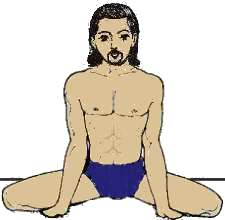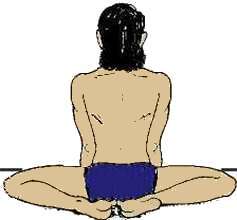Yoga Poses : Frog Posture (Mandukasana)
  Basic Facts about the Yoga Posture (Asana) The Frog Posture (whose original Indian name is Mandukasana) in Yoga is suitable for improving the flexibility of the legs (especially the thigh muscles). Note that Manduka means a Frog. The posture gets its name because the person performing it resembles a Frog.
Stepwise Technique
Tips and Comments
Potential Benefits of the Yoga Posture (Asana)
Disclaimer : Syvum makes no representations or warranties of any kind, express or implied, as to the correctness of the content as well as the accuracy and use of the information regarding the practice of Yoga. It is strongly advised that you consult your physician before engaging in any physical activities. The information herein is not intended to substitute professional medical opinion or qualified Yoga instructors' opinion. To the full extent permissible by applicable law, Syvum disclaims all warranties, express or implied, including but not limited to, implied warranties and fitness for a particular purpose. Syvum will not be liable for any damages of any kind arising from the use of the information regarding the practice of Yoga, including but not limited to direct, indirect, incidental, punitive and consequential damages. |
10 more pages in Yoga Postures (Asanas)
